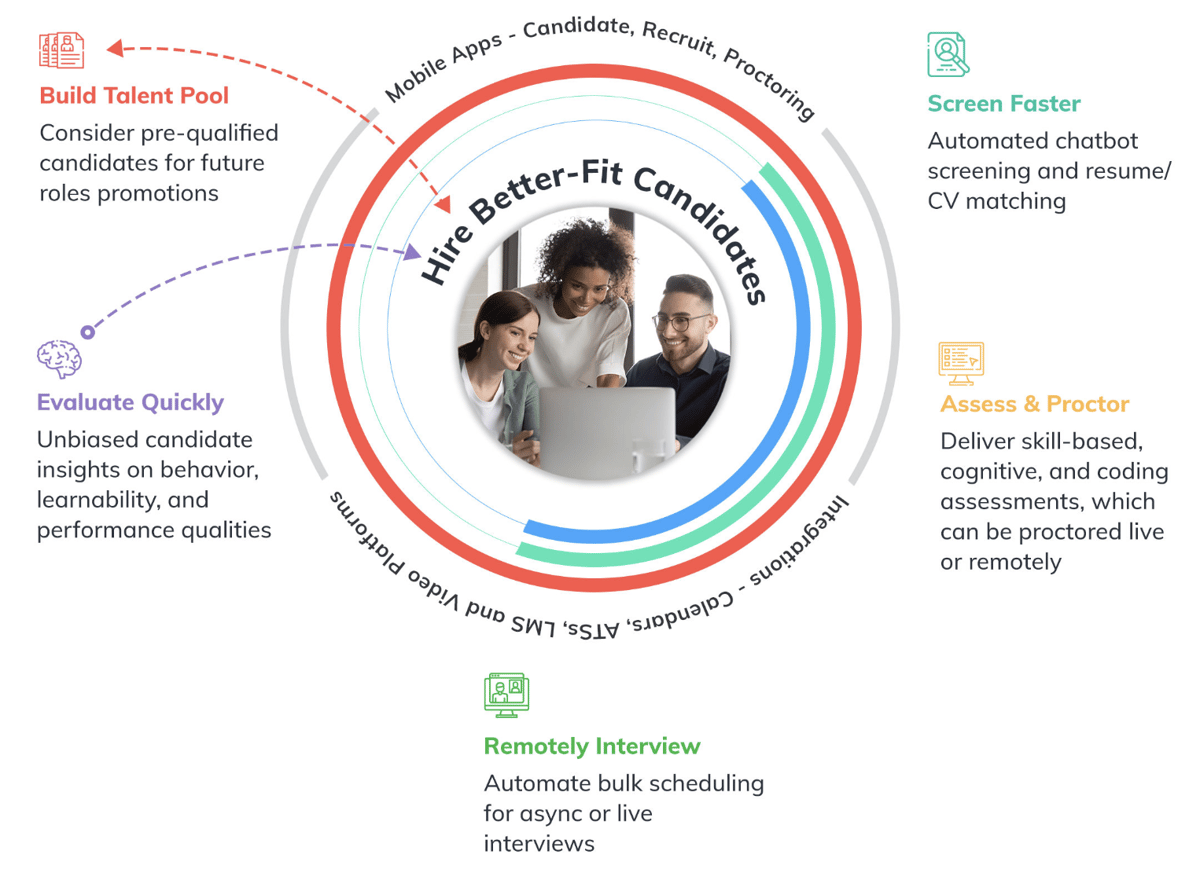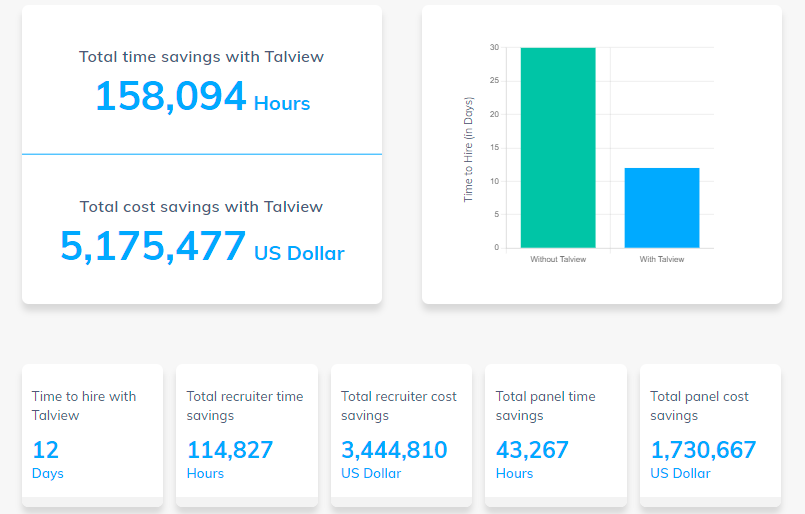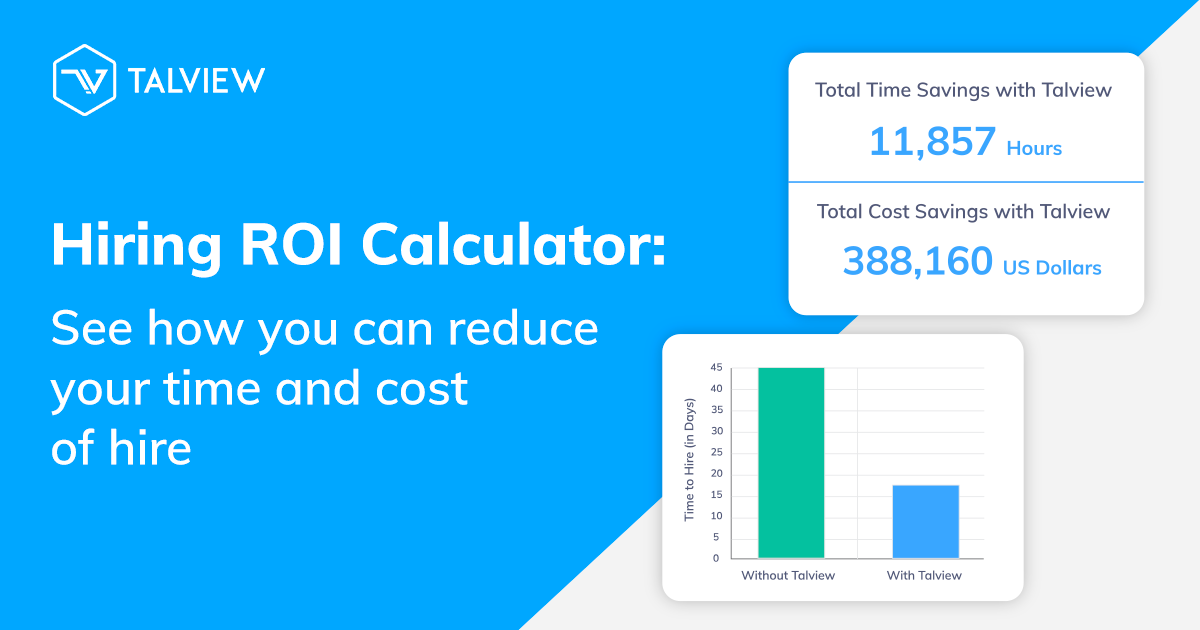Recruitment today is a whole new game than what it was a few years ago. The adoption of innovative technologies like AI and automation has changed how companies find the best fit and matched candidates. How do these companies ensure they allocate their resources appropriately for their recruitment efforts? The answer lies in this statement: “What gets measured gets managed.” We’re talking about Recruiting ROI.
Determining the Return on Investment (ROI) of any process is usually exhausting unless you have all the data ready in hand. More so in the case of recruitment, where many elements are in play. For instance, more candidates coming through your doors doesn’t necessarily equate to a solid return.
How, then, can one maximize their recruiting ROI effectively while optimizing their recruiting efforts? Let’s find out.
This blog post contains the following sections:
-
Why is it important to measure the ROI of your recruitment efforts?
-
Top hiring metrics to consider while measuring your recruiting ROI
Why is it important to measure the ROI of your recruitment efforts?

ROI is the ratio between the amount of return on investment delivered relative to its cost. Knowing the recruitment ROI for the specific recruitment strategies you employ will help you allocate your time and money in an appropriate manner to your best-performing recruitment efforts. In the long term, it helps you save a lot in terms of the time taken to hire, the cost of hire, and so on.
In other words, it helps you be smarter with your investments and make better decisions. Whether a recruiting drive ultimately becomes a hit or has a dull outcome, the resulting information can make future recruitment efforts far more effective. However, it is important to understand that while some of these returns can be quantified, others simply cannot.
Top hiring metrics to consider while measuring your recruiting ROI

Recruiting metrics are measurements that provide insights into the value and effectiveness of your recruiting efforts. While metrics in themselves do not make a recruitment strategy, their efficient and tactical use leads to an effective recruiting process. Here are the top metrics for you to consider while measuring your recruiting ROI:
Time to hire
Time to hire is basically the amount of time it takes to bring a new employee on board from the moment you put out a job vacancy. It is a crucial talent acquisition metric that measures the efficiency of a major part of the recruiting process, including sourcing, screening, and interviewing. It can help you analyze which element of your recruitment process takes up most of your time and pave the way for you to reassess the entire process.
An increased time to hire can affect an organization in more ways than one. For starters, a long time to hire not only impacts a company’s productivity and revenue but also its brand image and the candidate’s experience. Equally painful is the case of the opportunity cost associated with an open position — the longer a position remains open, the higher the opportunity cost.
Thankfully, time to hire is also the easiest recruiting metric to improve, owing to the many recruiting software tools available in the market that help automate mundane tasks.
Cost per hire
Cost per hire is one such metric that the decision-makers in an organization would be the most interested in tracking. And rightly so! It is important to know how much it costs to hire each person and where you might be losing money unnecessarily. In short, it helps you understand the cost-effectiveness of your recruitment process.
An increased cost per hire could indicate that your HR and acquisition teams are not operating at peak performance. Tracking the cost per hire helps you analyze where you’re spending more money than you should and provide an opportunity for you to spend it elsewhere.
Quality of hire
Quality of hire is undoubtedly one of the most sought-after metrics by recruiters worldwide. Finding a quality candidate is one of the most important duties of a recruiter. The costs of hiring a wrong/bad employee can be high and can cost more than what the company intended to.
It can lead to decreased productivity from the bad hire and the team members, increased time spent on hiring the wrong hire, decreased morale as a result of high turnover, and the entire recruiting process restarting in the hope of finding a better candidate.
Candidate experience
Are your recruiters meeting the needs and expectations of your potential recruits? If your hiring process is clunky and doesn’t appeal to the candidates, you are likely to lose the best talent for your organization right there. Your recruitment process needs to be as efficient as possible, not just for your organization’s sake but also for the candidates.
An unpleasant candidate experience could drive a potential hire away, in turn making your recruitment efforts meaningless. According to a report by the Talent Board, 41% of candidates who gave their experience the lowest rating said they would take their business elsewhere.
What can you do to make sure your recruitment efforts bear fruits and you have an optimal hiring ROI?
How can you maximize your recruiting ROI?
There are multiple ways in which you can optimize your recruiting efforts and maximize your recruiting ROI. These are:
Going remote
Per a study by Owllabs, 88% of organizations have encouraged or required their employees to work from home, and 74% of companies plan to shift to remote work post-COVID permanently.
Remote hiring has proved to be one of the most efficient ways of hiring suitable candidates in recent times. However, remote recruitment is not a new concept. Many large organizations already use remote recruitment technology in some aspects of hiring, if not all. The benefits of going remote are multi-fold.
Using a remote hiring solution for your recruitment process can help you significantly reduce your time to hire by enabling you to perform various tasks like screening, assessing, and interviewing candidates faster and in tandem. In short, you can get it all done anytime from anywhere in the world. It, in turn, helps you reduce the cost of hiring as well since there is a significant decrease in the operational cost of hiring due to minimal manual intervention.
See how HCL saved 67% panel time with Talview’s hiring solution.
Automating manual processes
The need for automating manual processes has been on the rise among recruiters for a while now. Given the number of applications, each job vacancy receives, doing mundane manual tasks like screening the resumes, collecting candidate information, scheduling interviews, and so on takes up most of a recruiter's time, leaving a minimal opportunity for them to get to know the candidates.
Automating these tasks ensures that the recruiters do the job that the machines cannot: Building meaningful relationships with the potential hires. A standardized, automated process also ensures quality and accurate candidate assessment with no scope for any unconscious bias.

Image: Instahiring methodology from Talview focuses on remote, automate, and reuse.
Reusing candidate data
One of the biggest mistakes you can make as a recruiter is not utilizing the data you already have. Do you have a few candidates who are great but do not fit the current role? No problem.
According to a study by Glassdoor, 76% of recruiters say that attracting talent is their biggest challenge.
Building and maintaining a warm pool of interested qualified candidates can be great to reduce your cost-per-hire. When new vacancies open, you’ll already have a list of great, interested candidates, and you wouldn’t have to go through the hassle of sourcing yet again. You can pick up right from where you left, look at their previous assessment reports, and take it from there.
Adopting a mobile-first approach
As Gen-Z and other digital-native generations enter the workforce, adopting a mobile-first approach is vital to an effective recruitment process. Not having a mobile-friendly recruitment process can lead to a higher time to hire. Prioritizing recruiting through mobile devices means building recruiting tools and processes, keeping usability on mobile devices in mind, or leveraging a vendor who provides mobile-compatible solutions.
Having a mobile-first approach is a boon for both the recruiters and the candidates. While the candidates can apply for jobs and attend interviews from the place of their choice, the recruiters benefit from tracking the progress of the entire process, getting feedback in real-time, and so much more when going mobile. Overall, it helps provide a level playing field for all candidates and gives them an unforgettable candidate experience.
Investing in candidate experience
Often, you hear stories of candidates turning down job offers after a bad experience in the recruitment process. If your hiring process extends beyond a week and requires your candidates to fill out papers and get on multiple calls and email threads, the chances are that the candidate will drop out and opt for a company with a better and more candidate-friendly hiring process.
Providing a great candidate experience ensures your time to hire is improved, your retention and onboarding rates are high, and your brand health is top-notch.
Leverage AI to create an experience that the candidates would never forget.
See how: What is Candidate Experience, and Why is it Important?
Embracing a data-driven process
Data is everywhere now. While in the past, the recruiting decisions were heavily dependent on the recruiter’s intuitions, that is not the case anymore. With the advent of Artificial Intelligence, making unbiased, well-informed decisions has become the norm.
Data analytics can help you track, measure, and evaluate the candidate data and your company’s hiring decisions. It can also enlighten you about any potential problems within the recruitment process, which can then be corrected before becoming critical.
Hiring ROI Calculator by Talview
Introducing Talview's new Hiring ROI Calculator.
Talview has created a hiring ROI Calculator that shows you the most immediate impacts that leveraging Talview’s hiring solution can have on your recruiting efforts. You can calculate your Hiring ROI with Talview in just 4 easy steps:
Here’s all you have to do:
Enter your approximate numbers in the fields provided and click on “Calculate ROI.”

This is a sample IT / IT Services Provider example. Numbers may differ depending on your organization.
And voila! You have all the details you’ll need to understand how Talview can transform the way you hire.

This is a sample IT / IT Services Provider example. Numbers may differ depending on your organization.
Conclusion
Given the economic uncertainty we are all facing now, it’s even more important to get more value propositions when it comes to recruitment. Calculate your potential hiring ROI today by clicking the image below.

.png?width=1200&name=IH2021%20SM%20Images%20Template%20(2).png)








Leave a Reply